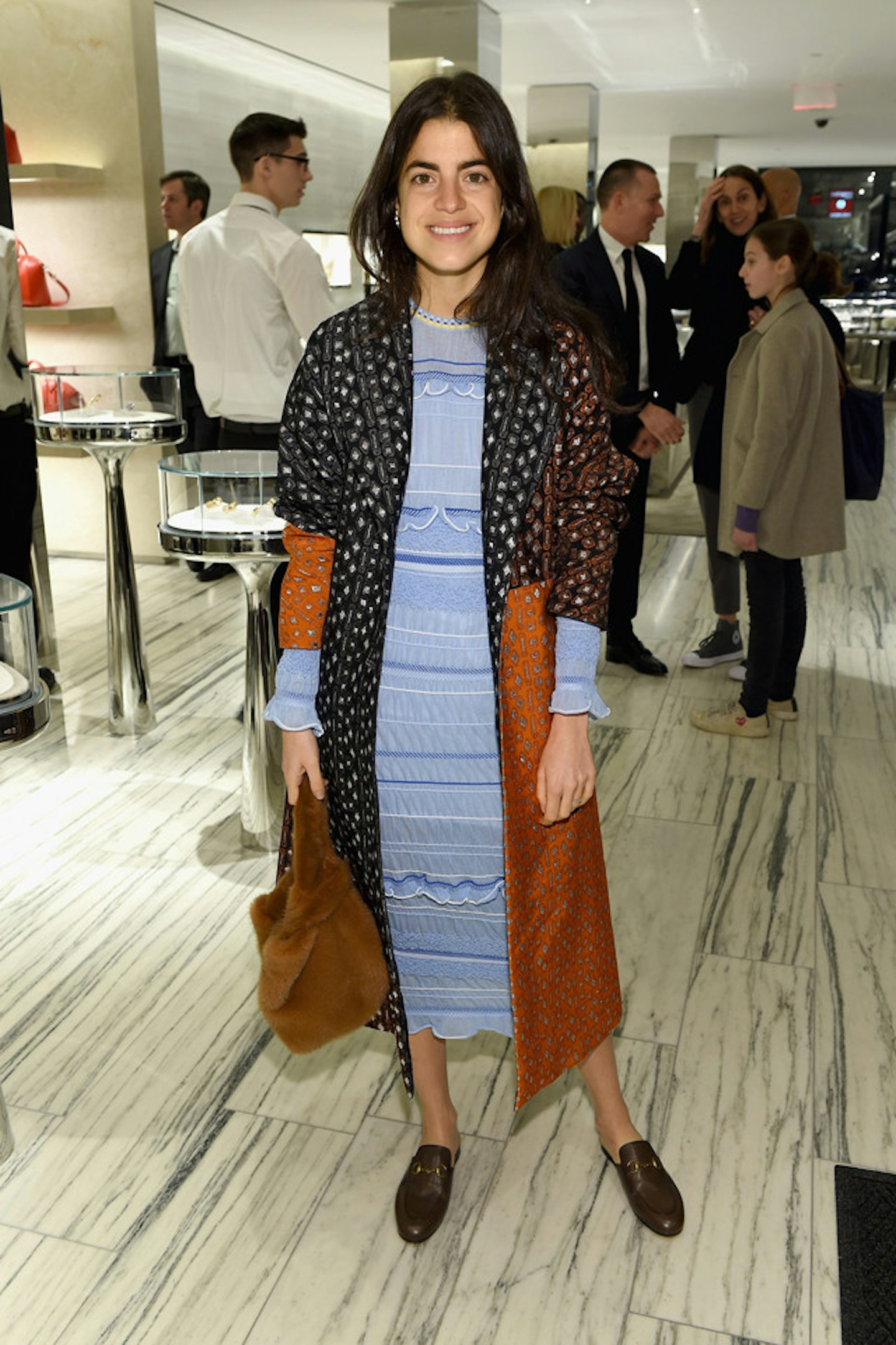Hardly a week goes by right now without someone else extolling the benefits of uniform dressing. Which for the uninitiated means wearing identical clothes, or similar variations on the same outfit, every single day.
Usually something chic, simple or expensively tailored (notably, the people talking about this approach are rarely in a hi-vis jacket or an Asda fleece), the idea is that sparing yourself the stress of choosing a different outfit leaves you free to become massively successful instead. If the devotees are to be believed, the only thing between you and that dream promotion, riches and power is a wardrobe of identical grey cashmere sweaters.
Hillary Clinton does it. Angela Merkel does it. Everyone on The Simpsons does it. Steve Jobs did it in Mom jeans and a black rollneck, an outfit he died tragically too soon to see copied by every 20-something in Stoke Newington.

Mark Zuckerberg does it with grey t-shirts. Anna Wintour does it, with floral frocks and awkward sandals. Even my boyfriend does it, with tartan shirts from Topman. And he is less stressed and more productive than I am, that can’t be denied.
Obama does it – though this is less remarkable as a) most suit-wearing men could pitch up in the same clothes every day without anyone batting an eyelid until the smell started to spread and b) Obama would look suave in a bin bag. 'I'm trying to pare down decisions,' he told Vanity Fair in 2012. 'I don't want to make decisions about what I'm eating or wearing. Because I have too many other decisions to make.'
Psychologists agree that in our world of endless, confuddling choice, there’s a logic in limiting the decisions we make each day to the ones that really matter (like lunch). 'Making decisions uses the very same willpower that you use to say no to doughnuts, drugs, or illicit sex,' says Roy F. Baumeister, author of Willpower: Rediscovering the Greatest Human Strength, who coined the term ‘decision fatigue’ to explain what happens when our brains are overloaded with options. By Baumeister’s reckoning, not using up our mental energy in front of the wardrobe every morning could help us make better decisions later in the day – such as not having a drug-fuelled doughnut orgy for lunch.
But there are problems with prescribing uniform dressing for everyone. So many I have decision fatigue just choosing which to list first.

The last time I wore a uniform was at school – a calf-length navy pleated skirt and red wool hat, apparently chosen as a more efficient way to stop us getting pregnant than actual sex education – and yes, I made decisions. Some were good, like doing GCSE Dance instead of GCSE Geography. Some were bad, like the fringe I had for most of 2004. But mostly I just felt stifled, limited to expressing my burgeoning personal style through the mediums of pencil cases, drawstring carrier bags and butterfly hairclips. Shaking off that uniform at sixth form was like coming out of a long hibernation.
Likewise, as an adult freelancer I could regularly go whole days without putting clothes on at all, which would leave plenty of juicy willpower left for work – but while I might be more productive in my PJs, I am happier and less frantic when I’ve taken the time to get dressed and brush my hair. I feel like a functioning human, not a typing droid.
And that’s the thing about uniform dressing; it focuses on success, but forgets to measure happiness.
You know what else can make you happy? A really out-there outfit. Trussing yourself up in a shop-fresh ensemble, the kind that has thought, care and possibly a whole Pinterest board behind it. The kind that makes people pause when you walk into the office and say “LOV-I-ING THIS” with a sassy fingersnap. Those outfits make you happy.
Professor Karen Pine, author of Mind What You Wear, has evidence to support the idea that far from holding us back, bold outfit choices can actually boost confidence and mood. 'Our inner mental processes and perceptions can be primed by our clothing, as we internalise the symbolic meaning of our outer layers,' she says. 'When women are stressed their world narrows down resulting in them wearing less of their wardrobe, neglecting 90% of it.' So is it possible that for some of those world leaders and business bods, wearing the same clothes every day is a symptom of stress rather than the cure for it?
The uniform concept also takes one step further fashion’s preoccupation with ‘classics’ – that time-old bollocks about spending hundreds of pounds on a plain white shirt because it will immediately turn you into Audrey Hepburn. Fashion people are so determined to have us believe that this short, rigid list of spendy basics (the shirt, the trench coat, the very expensive grey t-shirt) are some sort of one-style-suits-all chic-ness solution. 'Throw on a crisp white shirt!' they bellow. 'You’ll look so terribly French! Now leap across a puddle, holding a balloon!'

'Even better, don’t buy a shirt at all – borrow one from your conveniently-sized graphic designer boyfriend, throw it on with an insouciant shrug and go out to brunch!'
What they don’t tell us is how to deal with boob-gape down the middle, how to scrub ketchup off our fronts in a portaloo, or what to do when the crisp white shirt makes you feel more like a promo model doing ‘saucy secretary’ in a stock image than Charlotte Gainsbourg. ‘Classic’ clothes are bullshit, not least because they assume you have a ‘classic’ fashion body to go with them. High-necked t-shirts, cable-knit sweaters, trench coats and straight-cut slacks did not earn their rep as staples because they make full hips and bountiful tits look great.
Another thing – there’s a certain attitude from the uniform dressers that dismisses fashion as a shallow waste of time. 'I feel like I'm not doing my job if I spend any energy on things that are silly or frivolous,' says Mark Zuckerberg, a man whose job is literally to help your Auntie Lynn play Farmville. While it may be true that a set of floral co-ords hasn’t (yet) cured cancer, and yes, maybe I would have written a novel in the time I’ve spent throwing creased summer separates wildly around my bedroom, screaming, I’m still wary of the idea that caring about clothes is a superficial trapping we need to be freed from.
Women are too often told that traditionally ‘female’ passions and hobbies are stupid. We’re told that fashion is corrupt and evil; heels are for tottering idiots; makeup is taking a daily dump on our self-esteem. Yet nobody is making the same argument against traditionally ‘male’ pursuits. Nobody speculates about the extra power and productivity that could be harvested if people only stopped wasting time and energy following the Premier League. 'Don’t watch a match every weekend! Spend two hours making constructive notes on your five-year plan instead!' said nobody, ever. 'There, don’t you feel better now your head isn’t full of silly football?'
And that’s because we need passions and hobbies, however daft they may be. We know that the success of our day doesn’t hinge on finding the perfect top to go with our culottes, or keeping our clashing spots and stripes on the artful side of ‘migraine’, but that doesn’t mean the buzz counts for nothing. There’s an excitement that comes from ripping up the rule book and starting fresh every morning – for those of us who find joy in clothes, it can be as energising as those extra 20 minutes in bed for people who wear a Dorothy Perkins shift dress every day.
So let’s conclude, shall we, that some people are natural uniform dressers. They like order and routine. They feel great in a variation on the same beige trouser-top-shoe combo, and they enjoy the way that everyone falls over themselves to applaud on the rare occasion they pull on a slightly jazzy frock. That’s grand, for them. Because they are not their clothes.
But they’re not me. They’re not you either, if you’ve read this with six ASOS tabs open and one eye on Man Repeller’s Instagram. We are our clothes, and that’s ok. We get our kicks from accessories and on-point layering. We treat every day like an appearance on Stars in their Eyes, looking in the mirror and inwardly announcing 'today, Matthew, I'm going to be a 70s librarian/grunge teenager/Penny Crayon from the cartoon Penny Crayon.' We don't have a personal style so much as an ever-changing daily 'concept'. And that's fine. What's more, it's fun.

Don’t tell me extravagant dressers can’t be creative forces too, because I will smother you with my unnecessary scarves. For every Grace Coddington in her anonymous black, there’s an Iris Apfel. A Frida Kahlo. A Miss Piggy.
And while the uniform dressers might power up the career ladder, us changeable mufti dressers take the scenic route. We’re the ones people always remember, the ones who shake things up and understand why it’s sometimes good to explore every option available. We’ll have a doughnut for lunch please, and a nap in the afternoon – and once we’ve earned our money, we REALLY know how to spend it.
Which is obviously not on 10 identical grey cashmere jumpers.
Like This? Then you may also be interested in:
All The Spring Trends You Tried To Wear Last Year But Will Actually Wear This Year
Follow Laruen Bravo on Twitter @laurenbravo
This article originally appeared on The Debrief.
